This post may contain affiliate links, meaning I can earn a small commission from items you purchase (at no cost to you).
Have you ever not blended a smoothie after seeing the sugar content? If so, then this post is for you! I’m sharing what fruits are low in sugar and highlighting my fav low sugar fruits, as well as sharing the best smoothie recipes using fruits with less sugar.
Why do I care about the sugar content of my smoothies? Well…
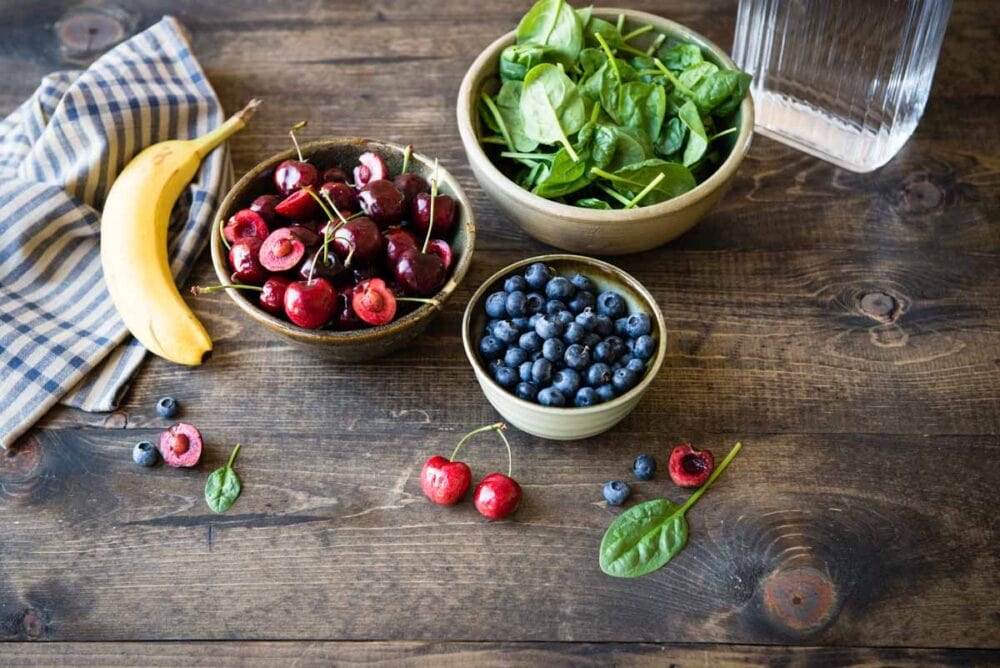
Drinking one green smoothie a day is one of the simplest ways to maintain a healthy diet.
There’s just something about drinking 16 ounces of pure leafy green and fruit goodness that makes the skin glow. And if the sugar content is keeping you from drinking a daily smoothie, then I want to help!
Table of contents
Which Fruits are Low in Sugar?
I’m sure this question has everyone naming a variety of berries, yet berries aren’t the only fruits with less sugar. Check out this sweet list:
- Lemon 1-2 grams per fruit
- Lime 1-2 grams per fruit
- Raspberry 5 grams per cup
- Strawberry 7 grams per cup
- Blackberry 7 grams per cup
- Kiwi 6 grams per kiwi
- Grapefruit 9 grams per 1/2 fruit
- Avocado 1 gram per fruit
- Watermelon 10 grams per cup
- Cantaloupe 13 grams per cup
- Orange 12 grams fruit
- Peaches 13 grams per fruit
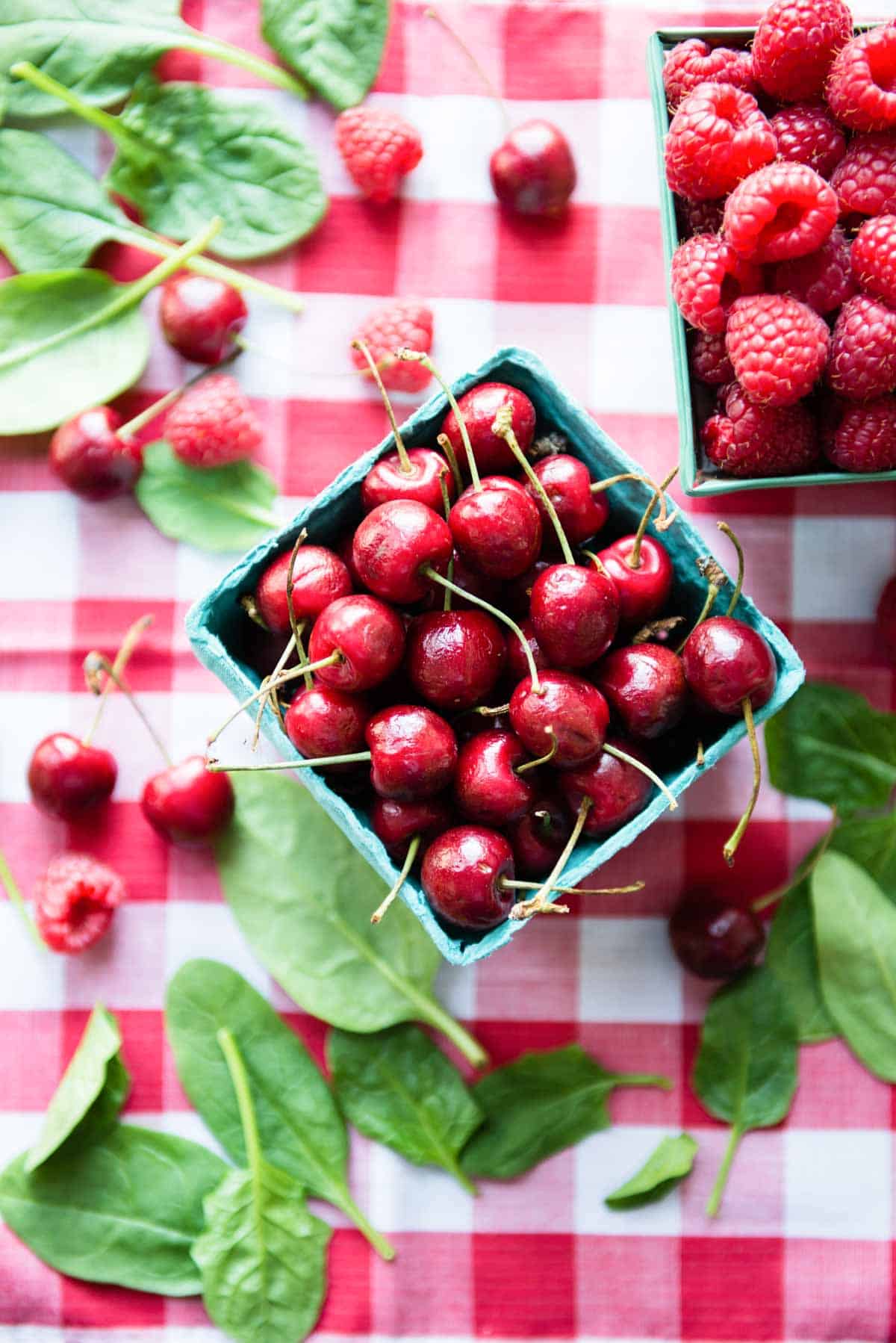
Since 1 serving of green smoothie has 1.5 cups of fruit, feel free to swap out a higher sugar fruit in any of my smoothie recipes for 1.5 cups of any fruit on this list. That will immediately lower the sugar content.
Natural Sugar VS Processed Sugar
It’s super important to note that not all sugar is created equal. 1 cup of refined sugar is NOT the same as 1 cup of fruit sugar. Why? because fruit not only contains sugar, but also fiber. Fiber is essential for breaking down sugar, and keeping our bodies from a sugar crash.
Daily consumption of fruit can actually combat obesity, according to a study done by the US National Library of Medicine. Yet, if fruit still causes your blood sugar to spike, then speak to your practitioner for the best diet plan for you.
Green Smoothie Formula for Low Sugar Smoothies
My tried and true green smoothie formula is this: 1.5 cups fruit + 1 cup leafy greens + 1 cup liquid. Use this and you can’t go wrong! Yet, if you’re trying to keep your blood sugar happy, then I’ve got a trick for you…. just flip the formula.
That’s right, turn that smoothie formula into 1.5 cups leafy greens + 1 cup fruit + 1 cup liquid. A deliciously sweet smoothie, yet lower in sugar! This way you can still enjoy a variety of fruits and also keep your body from experiencing a sugar crash. I’ve got quite a few smoothies for diabetics that meet this criteria!

Fruit Smoothies with Less Sugar
These smoothies are my go-to when looking for a low sugar option. Try a few of these and then let me know what you think!
- Raspberry smoothie
- Strawberry banana smoothie
- Apple celery smoothie
- Lime smoothie pops
- Banana oatmeal smoothie
- Strawberry smoothie
- Avocado smoothie
- Cherry Vanilla Diabetes Smoothie
All of the smoothies above have less than 20 grams of sugar per serving. Plus, they’re loaded with fiber to help process that sugar into useable energy in the body. If you are looking for smoothies low in sugar then check out my list of smoothies for diabetics… or just anyone looking for a sugar stable drink.
More ways to process sugar in smoothies
If you want to lower the sugar in your smoothie even more, then boost it with protein + healthy fat. Your body needs carbs (sugar + fiber) and protein, as well as healthy fat to function properly. If you find yourself having a sugar crash after drinking a smoothie, then you should be boosting it to help process the carbs you just ingested.
My fav way to boost a smoothie is with a plant based protein powder, like Homemade Protein Powder. This protein powder is designed especially for smoothies. 1 serving adds 10 grams of protein as well as 4 grams of fat to every smoothie.
Low Sugar Fruits FAQs
While fruits naturally have some sugar, there are options that are low… and have fiber to help your body process that natural sugar to keep your glucose from spiking. This includes: papaya, lemons, watermelon, grapefruit, raspberries, strawberries and blackberries.
Pomegranates, mango, bananas and oranges are higher in natural sugar. Choose greener bananas for a lower sugar option and eat these after eating a meal loaded with vegetables, protein and healthy fat to lower a potential sugar spike.
Stick to my low sugar fruit list for fruits that will give you the smallest amount of natural sugar, and eat those fruits after eating other foods like vegetables, protein and healthy fat. Eating fruit with things like almonds, cashews, nut butter, in a salad with plenty of vegetables and leafy greens, or with a meal or in a green smoothie can all help your body best process those fruits.
What are your fav low sugar fruits and how do you like to eat them? Drop a comment and share!


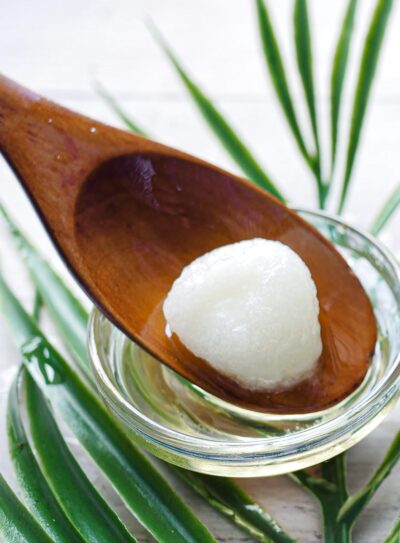
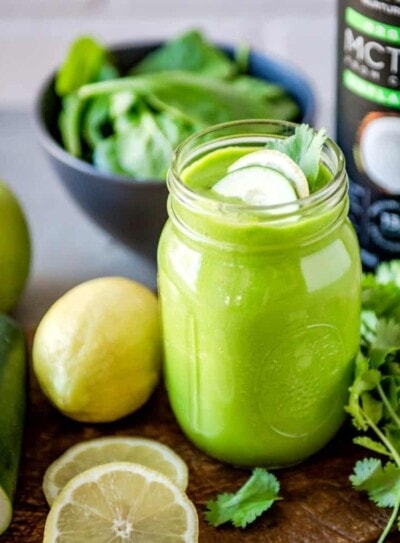
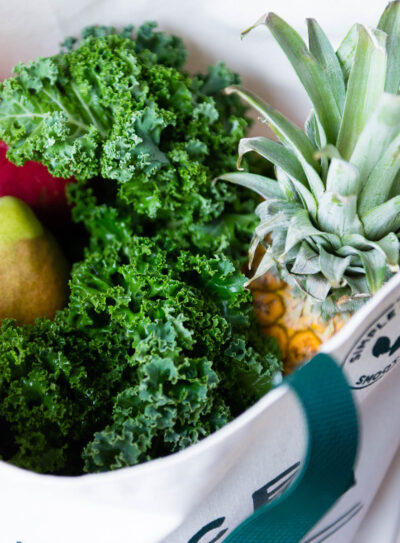
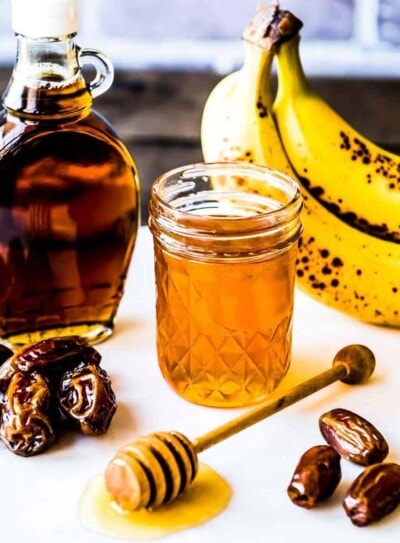
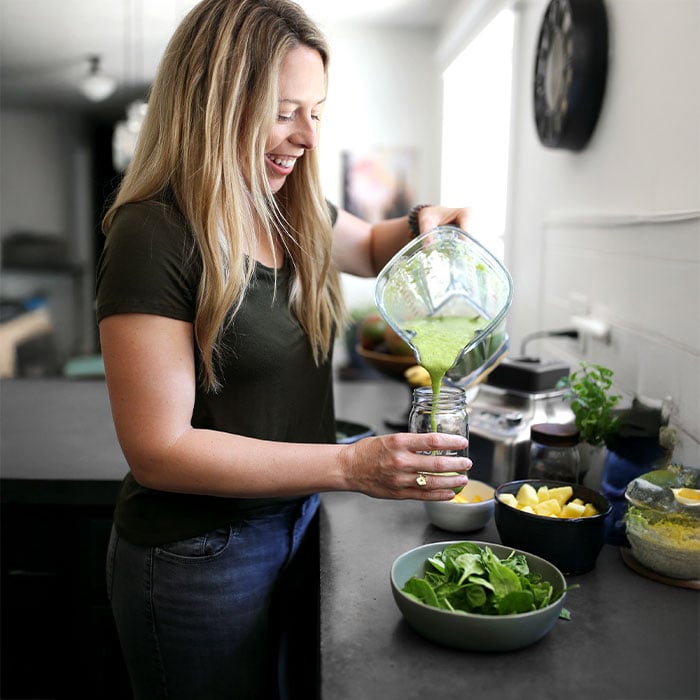









Hi Jen
My name is Julie. My Dad is 84 and has bladder cancer. Looking for smoothies that can help my Dad have regular movements daily. I am looking for low sugar and fiber. I will watch for you email. Thank youJulie
Hi Julie! I’d recommend checking out these 15 smoothies for diabetics, don’t let the name fool you, anyone can try these out!
Did anyone else beside me actually tested before having this drink, I did. I switched from the banana knowing even a 6″ size no brown spots would spike. However would keep you fuller. I opted for the avocado. I tested was before was (this is Canadian) 8.9 after went up to 10.2. I didn’t bother to rate it just gave my opion, test, test, test. You would be surprised. Dieticians only know what science tells them. I wish they would start letting people do this.
Hello – what amount of avocado to replace the half banana? Thank you
Awesome question May! We’d start off with 1/4 avocado to replace 1/2 banana. If you’d like a thicker creamier smoothie, then add a bit more avocado.
Great Read, and very informative Blog.
I try this recipes this morning, but instead of water I used organic coconut water and instead of adding protein power I added Chia seeds. It taste good.
Hello- Should the fruit be fresh or frozen? Also, would it be okay to just add a plant based protein powder? Thank you.
Awesome questions! The fruit can be fresh or frozen, yet using at least 1 frozen helps to make your smoothie colder. And a plant based protein powder is def a great idea! Check out our homemade protein powder – 10g of clean organic protein per serving.
Glad you shared these options!
I love this smoothie! It’s nice to have low-sugar ideas. 🙂
I make this at least once a week for my kids- we all love it.
My father-in-law is diabetic, love having these ingredients on hand to help keep his sugar levels low.
I did not have strawberries and blueberries so i used just spinach ginger turmeric banana and pineapple. I actually liked the taste and blending the greens and water first makes a whole lot of sense
That sounds delicious and we are big advocates of blending greens + liquid first. It makes for a nice, creamy smoothie!
I read this online – is it true? :
If you blend fruit, the natural sugars are released from within the cell walls of the fruit and become “free sugars”. Free sugars include any added sugars (including honey and maple syrup) and are the kind we should all be cutting down on to protect our teeth as well as lower our energy intake to help maintain a healthy weight. Even if they have some added vegetables like spinach or kale, they are still likely to be high in sugar.
Hi Karen. Blending fruit does not increase its sugar content. If you have 1 1/4 cup of berries with 17g of carbohydrates, 5g of fiber and 11g of sugar, that nutritional information will stay the same. What does change is how quickly that fruit gets absorbed into your body. I’m not sure where you read that blending fruit creates “free sugars” but that is incorrect. Blending fruit will not alter or change the type of sugar fruit contains. If you are worried about the sugar content in your smoothies, use more leafy greens, vegetables (e.g., celery, cucumber), and herbs and less fruit.
British Heart Foundation is one source of the “free sugars” info. It is in fact correct. See number 3:
Hi Sarah. The article you link to makes these claims but they don’t cite any studies that back up what they are saying. Furthermore, the video they link to under #3 speaks only about juices and soft drinks, not about smoothies.
Melissa Montalto, a Registered Dietitian and Certified Diabetes Educator, writes for the Whole U at the University of Washington. She states that “with smoothies, you retain the fiber [of fruits], which can help you feel fuller and improve your digestive health.” The Harvard T.H. Chan School of Public Health confirms that whole fruit smoothies containing skin, pulp and flesh retain the nutrients and fiber present in the fresh fruit. This is one reason we are Simple Green Smoothies, not Simple Green Juices; we love that blending keeps all the wonderful fiber you get from whole fruits and veggies.
Again, what does change when you blend a whole fruit is how quickly that fruit + its nutrients, fiber, and sugars are absorbed into your body.
You will notice that the majority of our smoothie recipes calls for at least one leafy green or vegetable, if not more. It’s important to remember you always have the option of using more leafy greens, more vegetables, and more herbs in your smoothies and less fruit. Our recipes are made to be tweaked and changed according to an individual’s tastes and dietary needs.
Please I really want to be clarified of this to make my smoothies worth enjoying for me. Can I say that 2 cups of apples, pear, peach, is equivalent to 4 medium size of each. Also can 2 sticks of banana be a equivalent to 2 cups of banana.
Thanks
Hi Njideka! There’s really no exact science to blending green smoothies. For the purposes of our smoothies, we usually say one apple, banana, pear, or peach is roughly equal to one cup of that fruit.